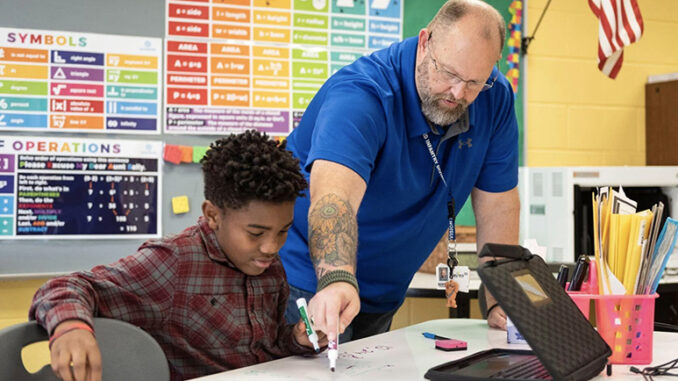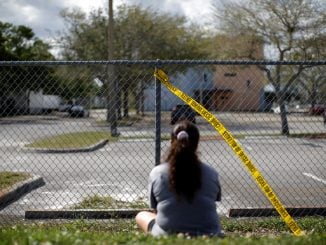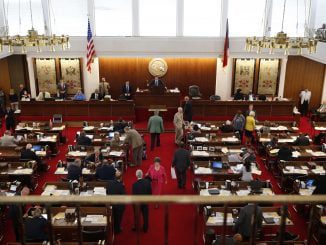
RALEIGH — North Carolina public schools saw an increase in teacher attrition per a draft of the annual State of the Teaching Profession report presented to the N.C. State Board of Education on April 3.
The attrition rate for the 2022-23 school year came in at 11.5% (March 2022 to March 2023). That percentage represents a decline of 10,373 teachers out of a total of 90,638 teachers employed that school year. The previous year’s attrition rate was 7.78%, representing 7,298 teachers.
Five attrition summary categories break down into 28 different subcategories: teachers who left a district but remained in education; left for personal reasons (48%); terminations (5.91%); left for reasons beyond the district’s control (14.93%); and left for “other” unspecified reasons (31.16%).
The 48% for “personal reasons,” translates to 4,981 teachers. That category has five subcategories that include resignations for child care, sabbaticals/more education, family relocation, career change and dissatisfaction with teaching. Of those subsets, career change was the largest portion at over 17%, or 1,738 teachers.
Teachers retiring with full benefits was just over 13% (1,354 teachers), and 5.7% (591) retired with reduced benefits.
Districts with the highest attrition this year included Halifax (18.31%) and Asheville City Schools (17.87%). Cumberland, Granville and Pamlico rounded out the top five with more than 15% each.
Conversely, the lowest state attrition rates were in Yancey County with 4.2%, followed by Alexander County (4.55%), Camden County and Clinton Schools (5.26%), and Haywood County (5.81%).
North Carolina’s attrition trends mirror that of national patterns. The increase in the state’s teacher attrition remains lower than the estimated national average of 12%. It was also noted that turnover rates in North Carolina public education fare better than other state agencies.
Tom Tomberlin, the senior director of the state Department of Public Instruction’s Office of Education Preparation and Teacher Licensure, acknowledged the challenges of filling vacancies and commended school districts for their efforts in hiring replacements.
“Historically, over every year, we have replaced more than 100% of those teachers who left in the prior year,” Tomberlin said of the attrition and vacancy rate data.
Tomberlin also noted that replacement hires had surpassed losses with 11,023 new teacher hires as of last September. He also said staffing surpluses were “not uniform” across the districts, and that “some districts are much better at attracting additional staff than others.”
A good portion of the discussion following Tomberlin’s presentation focused on discrepancies in the number of beginning teachers (BT) reported by the districts. When asked about the BT reporting, Tomberlin said he thought maybe districts were not interpreting certain temporary licenses as being BTs.
Experienced teachers made up almost 11% of attrition, while beginning teachers — those with less than three years of experience — had an over 15% attrition rate.
Tomberlin said a look at licensure data showed BTs were being underreported by the districts at a rate of 34% over the past two school years and may not have been receiving the proper support, which he said made it “highly unlikely” these teachers would continue in the profession.
State Superintendent Catherine Truitt highlighted related work she and Board Member Jill Camnitz have been doing over the past few years called “Pathways to Excellence,” which Truitt characterized as “the reimagining of teacher licensure and compensation.”
“I think it’s important to point out a couple of things. Teachers do not leave simply because of money,” said Truitt. “They say to themselves — and this is born out in working conditions surveys and other anecdotal evidence — ‘I wasn’t supported and therefore the work that I did was not worth the compensation I received.’”
In terms of new and current teacher compensation, the previous year’s state budget implemented several significant changes.
Last session, the legislature’s budget increased the base salary for BTs to $39,000 (a $2,000 bump) for the current school year. Salaries for BTs are projected to further increase to $41,000 for the upcoming school year. Under the budget, the average teacher raise was 7% over a two-year period. Newer teachers receive raises of over 10%, while veteran teachers with the most experience are set to receive raises of 3.6% over the same period.
Truitt’s comments underscored the changes and alternate pathways seen in how teachers enter the profession.
“Mentorship on its own not the answer,” Truitt said, and that mentorship looks different from classroom to classroom and across schools and districts. She added that a new teacher can’t be expected to be doing the same job as a 15-or 20-year teacher.
“This is something that many of us have been saying for a while, that teacher support needs to be embedded into licensure, and it’s not right now,” said Truitt. “We need to completely overhaul the way we license, compensate and support teachers.”



